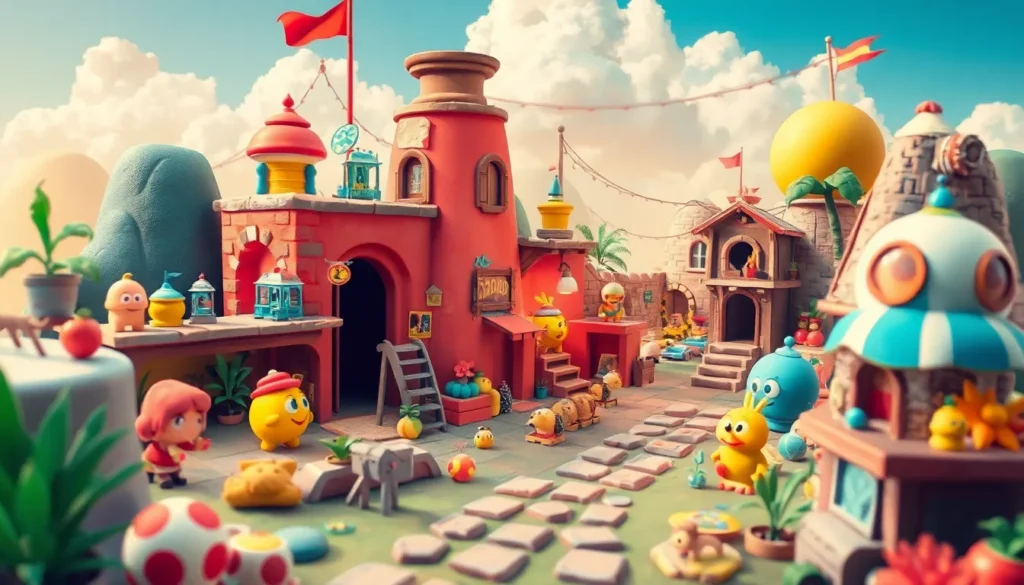Table of Contents
ToggleIn today’s fast-paced world, intentional culture craft isn’t just a buzzword; it’s the secret sauce for thriving organizations. Imagine a workplace where employees don’t just clock in and out but actually look forward to Mondays. That’s the power of a well-crafted culture. It’s like giving your team a daily dose of espresso—without the jitters.
Creating a vibrant culture requires more than just a ping-pong table and free snacks. It’s about weaving values, behaviors, and a shared vision into the very fabric of the organization. When done right, intentional culture craft transforms the mundane into the extraordinary, making employees feel valued and engaged. So, buckle up as we dive into the art and science of building a culture that not only attracts talent but also keeps them coming back for more.
Understanding Intentional Culture Craft
Intentional culture craft shapes a dynamic workplace environment. It emphasizes aligning practices with core values to enhance employee experience and engagement.
Definition and Significance
Intentional culture craft refers to the deliberate design and cultivation of organizational culture. This concept stresses the importance of embedding shared values and behaviors into everyday practices. Research shows that when employees feel a sense of belonging, they are 27% more likely to report satisfaction at work. Healthy workplace culture promotes higher productivity and retention rates, making it essential for organizations striving for long-term success.
Core Principles
Core principles of intentional culture craft create a solid foundation for vibrant work environments. First, clarity in organizational values guides decision-making and behavior. Second, authenticity plays a critical role; leaders must model these values consistently. Third, inclusiveness fosters a sense of belonging among employees, reflective of diverse perspectives. Finally, open communication channels facilitate feedback and strengthen relationships within teams. These principles collectively contribute to a positive culture that attracts talent and drives performance.
The Impact of Intentional Culture Craft

Intentional culture craft significantly influences both employee engagement and organizational performance. By embedding shared values and behaviors, organizations create an atmosphere where employees thrive.
On Employee Engagement
Employee engagement thrives when intentional culture craft is implemented. Research shows that individuals who feel a sense of belonging are 27% more likely to report job satisfaction. Engagement increases as employees witness authentic leadership exemplifying core values. Open communication fosters trust, encouraging team members to share ideas and feedback. Inclusiveness creates a dynamic where diverse perspectives are valued, driving collaboration. Together, these elements elevate motivation, making employees excited to contribute.
On Organizational Performance
Organizational performance improves with a well-crafted culture. Vibrant work environments promote higher productivity and retention rates. When employees align with organizational values, they become invested in the company’s mission. Intentional culture craft reduces turnover, saving costs associated with hiring and training new staff. Metrics indicate that companies with strong cultures outperform their competitors. By prioritizing these cultural elements, organizations not only attract top talent but also enhance their overall effectiveness.
Strategies for Implementing Intentional Culture Craft
Assessing the current organizational culture provides a baseline for effective culture transformation. Engaging employees through surveys and interviews serves as a valuable method for gathering insights. Observing daily interactions helps identify existing norms and values in practice. When management recognizes strengths and weaknesses, targeted improvements become clearer. Aligning feedback with data sets the stage for building a more engaged workforce.
Defining the desired culture involves articulating the vision and values that underpin organizational identity. Leadership should collaborate with team members to ensure input shapes cultural aspirations. Clear, specific descriptions of ideal behaviors guide future actions and decisions. Communicating these values consistently reinforces expectations, helping employees internalize them. When everyone understands and embraces the desired culture, commitment to organizational goals strengthens.
Challenges in Intentional Culture Craft
Intentional culture craft involves overcoming various challenges that can hinder its successful implementation. These obstacles require awareness and tailored strategies to navigate effectively.
Resistance to Change
Resistance to change often surfaces when organizations attempt to shift their culture. Employees may feel uncertain or threatened by new values and behaviors. Overcoming this resistance involves clear communication about the benefits of cultural transformation. Engaging employees in discussions about changes fosters a sense of ownership. Creating pilot programs allows teams to experience new cultural elements before full implementation. Highlighting success stories from within the organization also encourages others to embrace the new culture. Cultivating an environment where feedback is welcomed can ease transitions, making employees feel valued and involved in the process.
Balancing Inclusivity and Specificity
Balancing inclusivity and specificity poses a challenge in intentional culture craft. Organizations aim to create an inviting atmosphere that respects diverse perspectives while articulating clear values. Clarity in these values prevents vague interpretations that can dilute the intended culture. Engaging employees from different backgrounds during the values definition process ensures representation. This fosters a sense of belonging, but it must also maintain focus on core objectives. Regularly reviewing these values and seeking feedback helps the organization adapt and refine them. Meeting both inclusivity and specificity strengthens the commitment to shared goals and reinforces a cohesive workplace culture.
Intentional culture craft is essential for creating a thriving workplace. By embedding values and behaviors into everyday practices, organizations can foster an environment where employees feel valued and engaged. This not only enhances job satisfaction but also drives productivity and retention.
Organizations that prioritize culture craft are better positioned to attract and retain top talent. They create a sense of belonging that empowers employees to contribute meaningfully. As companies navigate the complexities of today’s work environment, focusing on intentional culture craft will be a key differentiator for long-term success.







